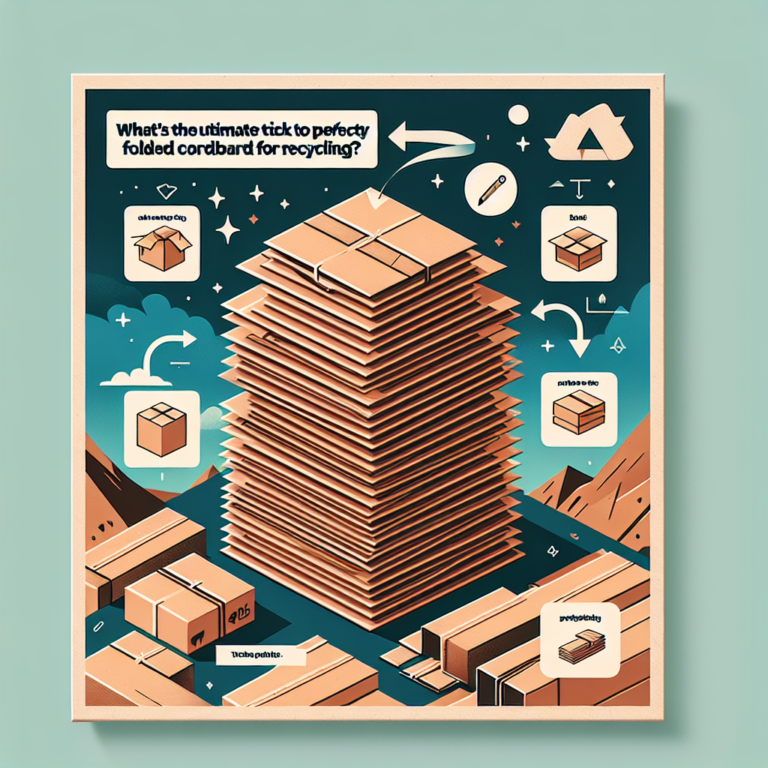Recycling and proper waste management are essential for environmental sustainability. As more people become conscious of their carbon footprint, recycling cardboard has become a common practice. However, efficiently stacking folded cardboard can sometimes be a challenging task. In this article, we will explore various techniques and suggestions to help you stack cardboard for recycling without it sliding or falling off the bundle.
The Challenge: Slipping Cardboard
One common problem many recyclers face is slipping cardboard. Thin twine is often used to secure the folded stacks, but tying a knot tightly enough to prevent slipping can prove difficult. Here are some suggestions to help alleviate the issue:
1. Reinforce the Twine with Double Knots
– When tying the twine around the folded cardboard, use a double knot instead of a single one.
– This will help create a firmer hold and decrease the chances of the tension becoming loose.
2. Increase Tension with a Firm Grip
– Make sure to grip the twine firmly while tying the knot.
– This will prevent the cardboard from sliding around and falling off the bundle.
3. Use a Thicker Twine for Added Security
– Consider using a thicker twine to secure the folded cardboard.
– Thicker twine provides a more secure grip, reducing the chances of slipping.
4. Utilize Additional Materials for Extra Stability
– If the slipping issue persists, you can try using rubber bands or bungee cords along with the twine.
– Secure these additional materials tightly around the folded cardboard to provide extra stability and prevent slipping.
5. Place a Sturdy Base for Support
– Before stacking the folded cardboard, ensure that you have a sturdy base to hold the bundle.
– A solid surface or a flat piece of cardboard will provide support and prevent slipping.
FAQ: Frequently Asked Questions about Stacking Folded Cardboard for Recycling
1. Why is stacking folded cardboard important for recycling?
Efficient stacking helps in transportation and processing. It saves space and ensures the cardboard doesn’t get damaged or ruined during transportation.
2. What’s the best type of twine to use for securing folded cardboard?
A thicker twine provides better grip and reduces the chances of slipping. Consider using natural fibers, such as jute twine, as they are durable and eco-friendly.
3. What should I do if the tension becomes loose even after tying a knot?
Try reinforcing the knot with an additional double knot and ensure you are gripping the twine tightly. You can also consider using additional materials like rubber bands or bungee cords for added security.
4. Can I recycle cardboard without stacking it?
While stacking is not mandatory, it is highly recommended for efficient recycling. Stacking ensures safe transportation, prevents damage to the cardboard, and saves space.
5. Should I remove any tape or plastic before stacking folded cardboard for recycling?
Yes, it is important to remove any tape, plastic, or other non-cardboard materials before stacking. These materials can contaminate the recycled cardboard and impact the recycling process.
Stacking folded cardboard for recycling is crucial for efficient waste management. By following the suggested techniques and tips mentioned in this article, you can overcome the challenge of slipping cardboard and ensure a secure stack. Remember to use double knots, increase tension, consider thicker twine or additional materials, and provide a sturdy base for support. By implementing these suggestions, you can contribute to a greener tomorrow. Happy recycling!



